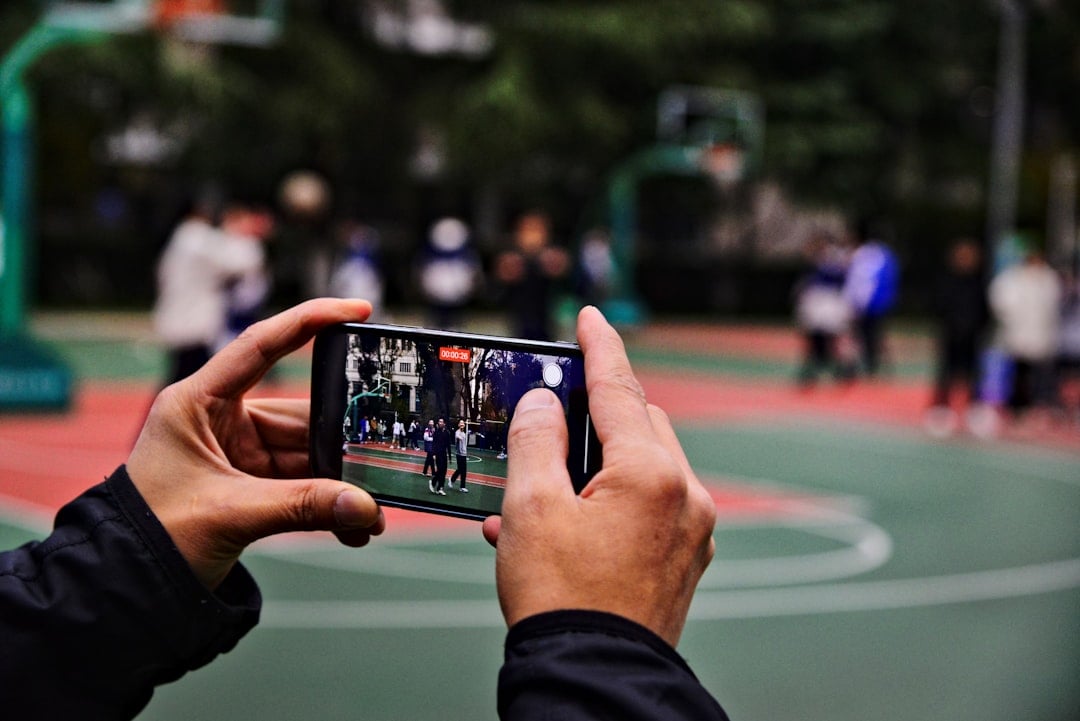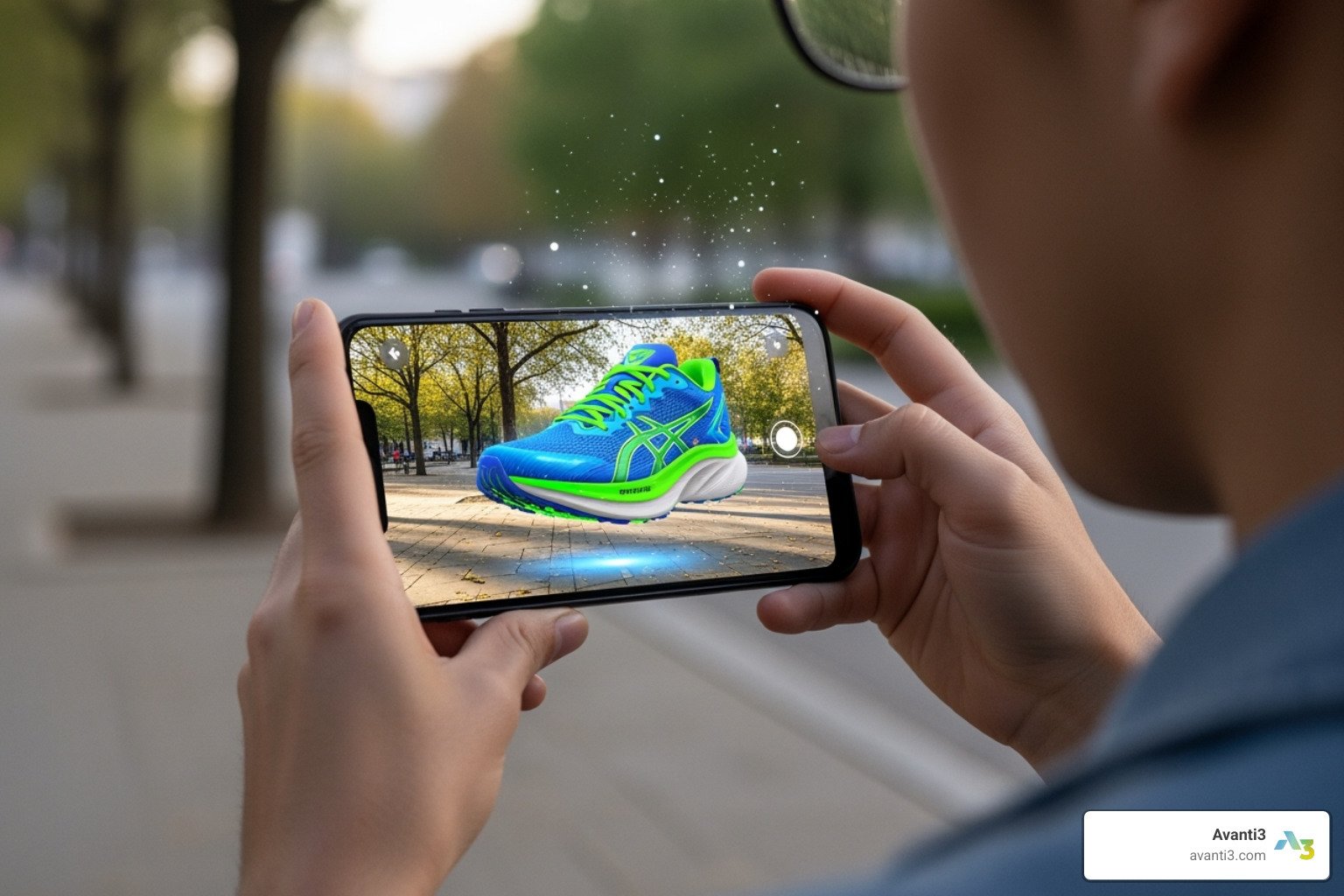Social media and sports: 7 transformative impacts
How Digital Platforms Are Revolutionizing Sports Culture
Social media and sports have created a perfect storm, fundamentally changing how we experience athletics. Fans no longer wait for the morning paper or evening highlights to catch up on their favorite teams and athletes.
Here’s how social media is changing sports:
- Direct Access: Fans can now interact directly with athletes through Instagram stories, Twitter replies, and TikTok comments
- Real-Time Updates: Live reactions, behind-the-scenes content, and instant news spread faster than traditional media
- Global Communities: Fans worldwide connect over shared team loyalties and create viral moments together
- Athlete Empowerment: Players build personal brands worth millions through their own content creation
- Marketing Revolution: Brands reach targeted audiences through influencer partnerships and data-driven campaigns
- Improved Viewing: Second-screen experiences with live stats, polls, and fan commentary during games
The numbers tell the story. Cristiano Ronaldo commands over 600 million followers on Instagram, while 90% of Gen Z fans use social media to consume sports content instead of watching full live events. A record-setting 5 billion people engaged with the 2022 World Cup on social media, proving that digital platforms have become as important as the games themselves.
This shift represents a complete reimagining of what it means to be a sports fan. Today’s fans don’t just watch; they participate in real-time conversations, influence narratives, and even impact player careers through their digital engagement.
I’m Samir ElKamouny AV, an entrepreneur and marketing expert. Throughout my career with innovative companies like Avanti3, I’ve witnessed how social media and sports create unprecedented opportunities for authentic engagement and community building.

The Change of Fan Engagement and Community
Fan engagement has evolved far beyond cheering from the stands. Today, social media and sports have transformed the connection between fans and athletes, offering unprecedented access and real-time interaction. It’s like we’ve all been given a backstage pass to the entire sporting world.
Fans now get real-time updates and exclusive behind-the-scenes content that humanizes our heroes, from locker room banter to training routines. This creates a “virtual stadium” where fans globally can connect and experience the game together. In fact, 32% of sports fans—and a striking 43% of Gen Z fans—use social media platforms while watching live sports, turning a solitary viewing experience into a shared, interactive event. This immersive engagement is what we at Avanti3 aim to improve with our Digital Fan Engagement solutions.
The New Era of Fan Engagement in Social Media and Sports
Direct interaction is a hallmark of this new era. Athletes host Q&A sessions, share live videos, and engage with comments, making fans feel closer to them than ever. This direct communication bypasses traditional media filters, fostering a more intimate connection.
Beyond official interactions, fans create a vibrant ecosystem of user-generated content, from witty memes to elaborate fan art, which becomes a core part of the sports narrative. Hashtag campaigns unite fans, turning online discussions into powerful community movements. This collective participation is reshaping fandom into a dynamic, two-way street. For those looking to deepen these connections, our insights on More on building online communities can provide valuable strategies.
Democratizing Sports Media: Power to the People
Perhaps the most profound shift is the democratization of sports media. Control has largely shifted from traditional outlets to individual fans and creators. Users now have the power to distribute sports content, offer their own analyses, and even counter mainstream media narratives.
A fan’s insightful tweet or a compelling fan-made video can gain as much traction as a story from a major sports publication. This power distribution has democratized sports media, allowing active fan participation to influence communication in unprecedented ways. It’s a testament to the power of community, which is why we’re passionate about building robust Community Building Platforms that empower these interactions.
The Athlete as a Media Powerhouse

Today’s athletes are more than stars on the field—they’re full-blown media empires. Social media and sports have given athletes complete control over their own story, something previous generations could only dream of.
Before social media, athletes relied on reporters and TV interviews. Now, they can show us their morning coffee, workout playlist, or thoughts on social issues directly. This direct line to fans has transformed them from distant heroes into relatable humans.
Athletes are mastering personal branding by sharing lifestyle content that goes beyond game highlights. We see their families, causes, and authentic selves, creating a genuine connection that traditional media could never deliver. The smartest athletes know they’re not just building a fan base; they’re building a business with every post and interaction.
Building a Global Brand and Influence
The numbers are mind-blowing. Cristiano Ronaldo has over 600 million Instagram followers, and Lionel Messi has over 500 million. This represents unprecedented global influence and earning power.
LeBron James has turned his social media presence into a business empire, earning $80 million from endorsements in a single year. Ronaldo pulls in an estimated $60 million in endorsements, proving followers translate to serious money.
The NIL (Name, Image, Likeness) ruling in college sports was a game-changer. Student-athletes can now monetize their social media. Gymnastics star Olivia “Livvy” Dunne earned $3.6 million in 2023 from brand deals tied to her massive social following, rewriting the playbook for college athletes.
These earnings often land athletes on lists like the Forbes list of highest-paid athletes, where social media influence is a key factor. Athletes have evolved into influencers, entrepreneurs, and cultural icons.
The Double-Edged Sword: Navigating Scrutiny and Pressure
However, this power comes with significant pressure. Social media and sports create a spotlight that never turns off. Every tweet and comment is analyzed by millions.
The mental health challenges are serious. Athletes face constant online abuse and cyber-bullying. One bad game or controversial statement can release a tsunami of negativity.
Public scrutiny has reached extreme levels. Athletes can’t have an off day or make a joke without it potentially becoming a viral disaster. The pressure to maintain a perfect image 24/7 is exhausting.
Missteps going viral is a major fear. A split-second decision can damage a career. Research on social media’s impact on athletes shows many struggle with performance anxiety stemming from their online reputation. The constant demand for content creates its own pressure, forcing a difficult balance between authenticity and privacy.
The New Playbook: How Social Media Redefined Sports Marketing

Sports marketing has shifted from expensive TV ads to a dynamic digital playground where creativity often outweighs budget. Social media and sports have completely flipped the script.
While traditional advertising still has a place, it now works alongside influencer partnerships and targeted digital campaigns that can reach millions of passionate fans with a single post. The power lies in the authentic connections these platforms create between brands and consumers.
When your favorite athlete genuinely recommends a product on Instagram, it feels more personal and trustworthy than a polished TV ad. Athletes have become powerful brand ambassadors simply by being themselves online.
Marketing teams can now see exactly how campaigns perform in real-time, adjusting strategies based on engagement rates, shares, and comments. This precision was unimaginable a decade ago. At Avanti3, we’ve seen this data-driven approach transform brand connections, which is why we’re passionate about solutions like AI Customer Engagement that help brands truly connect with their audiences.
Revolutionizing Marketing and Revenue with Social Media and Sports
A 2023 Deloitte survey revealed that while 58% of Gen Zers and Millennials still prefer live events, a whopping 90% of Gen Z use social media to consume sports content. They prefer highlight reels and behind-the-scenes clips to full games. You can explore these patterns in the full Deloitte survey on fan habits.
Smart brands have taken notice. 63% of marketers are increasing their influencer marketing budgets, and they’re not just focusing on men’s sports. Women’s sports are seeing unprecedented growth, with 1 in 3 fans holding more favorable views of brands that sponsor female athletes. This led to partnerships like Ally Financial investing 90% of its sports marketing budget into women’s athletics.
Social media and sports are also creating new revenue streams. Teams and athletes can now sell directly to fans through social platforms, cutting out middlemen and building stronger relationships. This direct-to-consumer approach opens up incredible opportunities. At Avanti3, we believe this is where our Digital Reward System can make a real difference by rewarding fan loyalty and building lasting connections.
Creative Sports Marketing Campaigns
The creativity in social media sports marketing is limitless. We’ve seen campaigns that would have been impossible in the traditional advertising world.
- Unexpected brand partnerships create viral sensations, like a mayo brand’s quarterback-themed fragrance or a shapewear company partnering with a women’s basketball league.
- Viral moments, like Grimace’s first pitch, can generate massive free publicity from a simple promotional event.
- Fan-driven campaigns are powerful. When fans connected a candy brand with basketball star Angel Reese, the company listened and created an official collaboration.
- Cause-based marketing resonates deeply. Brands that authentically align with causes athletes advocate for build genuine loyalty because they stand for something more than just sales.
Enhancing the View and Expanding the Field
Social media and sports are changing how we experience games in real time. You’re not just watching; you’re part of a global conversation.
This is the “second-screen experience.” While the action unfolds on TV, your phone becomes a gateway to another dimension of sports entertainment. You can live-tweet a touchdown, vote in polls about the coach’s next move, and join discussions with fans worldwide.
43% of Gen Z fans use social media while watching sports, turning a solo experience into a communal event. Our Digital Engagement Platforms are built for this dynamic interaction, creating spaces where fans don’t just watch, but participate.
The Rise of Live Streaming and Niche Sports
Social media and sports have opened the doors for sports that traditional TV ignored. The days of only watching “big” sports on major networks are gone.
| Feature | Traditional Broadcast | Social Media Live Streaming |
|---|---|---|
| Accessibility | Requires cable/satellite subscription; limited channels | Free/low cost; accessible via mobile/web; global reach |
| Cost | High production & distribution costs for broadcasters | Lower production costs; often free for creators |
| Interactivity | Limited (e.g., call-in shows) | High (live chat, polls, Q&A, emojis) |
| Niche Coverage | Very limited; focuses on major sports | Extensive; covers obscure sports, regional leagues, individual athletes |
Now, niche sports like competitive axe throwing or regional college lacrosse can find global audiences. The barrier to entry is so low that anyone with a smartphone can broadcast their local league. 41% of global sports fans are streaming live sports through digital platforms, proving the demand for authentic, accessible content. This democratizes sports, giving every team and athlete a chance to build a community.
Creating Immersive Second-Screen Experiences
The second-screen experience is more than just scrolling Twitter. It’s about immersive engagement that provides insider access.
Imagine pulling up live stats, switching between camera angles, or getting instant replays the main broadcast missed. Some fans access alternate commentary or join live video chats with other supporters.
The future is even more exciting. Augmented and virtual reality are creating experiences where you can virtually sit courtside or see player stats overlaid on your view of the game. At Avanti3, we’re pioneering these breakthroughs with our AR/VR Immersive Experiences, letting fans feel like they’re in the action from anywhere.
Every fan can customize their experience. Social media and sports have made it possible for everyone to watch the game exactly how they want to.
Navigating the Dark Side and Challenges of Social Media and Sports
While social media and sports offer great opportunities, they also present serious challenges. The same platforms that connect us can also spread confusion and cause harm.
The biggest problem is that misinformation spreads faster than a Usain Bolt sprint. Rumors about player trades, injuries, or personal drama can go viral in minutes, often without any truth. This happens because social media rewards speed over accuracy, leading to a messy mix of real news and speculation that leaves fans confused.
The instant reaction culture makes everything worse. When a controversial play happens, the response is immediate and often brutal, with no time for context. This raw, unfiltered reaction can snowball, amplifying negativity that affects athletes’ mental health and causes fan backlash based on incomplete information. For help separating fact from fiction, check out these Tips for spotting fake news.
Legal and Ethical Problems for Brands and Athletes
The legal side of social media and sports is a minefield. Brands face challenges around trademark infringement and “ambush marketing”—associating with an event without paying for official sponsorship. Sports organizations are highly protective of their intellectual property.
The Name, Image, Likeness (NIL) ruling created new complications. While it’s great that college athletes can profit from their brands, it raises ethical issues. These are often young people, sometimes just 18, dealing with contracts and brand partnerships.
Brands have a responsibility to act ethically. They must ensure fair compensation, provide guidance, and remember they’re working with students first. There’s also the question of authentic versus exploitative partnerships. The best collaborations feel natural and benefit the athlete, the brand, and the fans.
This is where thoughtful approaches are crucial. At Avanti3, we believe in building Community Loyalty Programs that create genuine value for all parties, fostering long-term relationships over quick cash grabs. The stakes are high, but with an approach that prioritizes transparency and fairness, we can steer these challenges.
The Future: Web3, AI, and the Next Generation of Fandom
The relationship between social media and sports is set for a major upgrade, driven by groundbreaking technologies like Web3, AI, and virtual reality. These are the building blocks of a future where being a sports fan is more immersive, personalized, and rewarding.
Imagine your AI-powered feed serving you curated content about your favorite team. During the game, gamification elements turn viewing into an interactive challenge where correct predictions earn digital rewards. With VR, you could be transported courtside, experiencing the game as if you were there.
This isn’t science fiction; it’s the future we’re building at Avanti3. We integrate Web3 technologies like NFTs, blockchain, AR/VR, and AI to create tools that empower creators and brands. Our customizable engagement solutions and fintech capabilities are setting new standards for how digital communities thrive. We’re excited to be pioneering NFT Engagement Tools that are reshaping fan engagement.
The Role of NFTs and Augmented Reality
Digital collectibles are already changing sports memorabilia. Instead of a physical item, fans can own verified digital moments. Fan tokens offer exclusive content or voting rights on team decisions. Proof of attendance tokens act as digital ticket stubs, proving you were part of a historic event.
Augmented Reality is turning every stadium into a high-tech playground. Hold up your phone to see interactive player stats floating above each athlete. AR graphics can break down plays in real-time, offering unique insights.
Our Augmented Reality NFTs take this further, creating dynamic digital assets that respond to real-world events. Imagine an NFT of your favorite player that updates with their latest stats. It’s the perfect blend of digital ownership and live sports.
Building the Future of Digital Communities
The future belongs to decentralized fan groups, where fans are stakeholders with a voice and ownership. This shift creates incredible monetization opportunities for creators, who no longer need traditional gatekeepers.
Think of it as the ultimate fan club. Fans can invest in teams or athletes through blockchain-based systems, participate in governance, and share in success.
At Avanti3, our approach to Web3 Community Management focuses on creating robust communities where every member feels valued. We believe the next evolution of fan interaction should be built on transparency, ownership, and direct value exchange.
This is where social media and sports are heading. Ready to be part of this change? Come Find the future of digital fan engagement with us, and let’s build the next generation of sports fandom together.
Conclusion
The evolution of social media and sports is one of the most exciting revolutions in modern entertainment. What began as simple photo sharing has reimagined how we connect with teams, athletes, and fellow fans globally.
We’ve gone from being passive spectators to active participants in a global, real-time conversation. Athletes have become media empires, fans have become content creators, and brands have found new ways to engage passionate audiences.
The numbers prove a fundamental shift. Cristiano Ronaldo’s 600 million followers outnumber the population of North America, and 90% of Gen Z fans consume sports via social media, not traditional broadcasts.
However, this journey has had its challenges. We’ve learned hard lessons about misinformation, the mental health pressures of public scrutiny, and the ethical complexities of NIL deals for young athletes.
What’s most exciting is what comes next. The future of social media and sports is about creating deeper connections through Web3 technologies, AI-powered personalization, and immersive AR/VR experiences.
At Avanti3, we’re not just watching this evolution—we’re helping to build it. Our focus is on empowering creators and brands with cutting-edge engagement tools to create tomorrow’s fan experiences today. Whether through NFT collectibles or AI-driven content, we’re working to make fandom more personal, rewarding, and fun.
The digital revolution is still in its early chapters. Every day brings new innovations and fresh ways for people to connect over their shared love of sports. We’re not just changing how we watch games—we’re building communities and bringing people together in ways that seemed impossible a decade ago. The game has changed, and we’re all winning.







